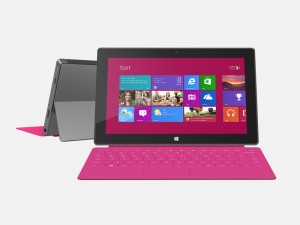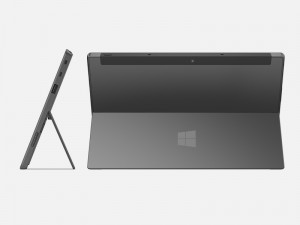Microsoft Slapped It's Own Partners


That slap was firm enough that some of those partners were more than disquieted, with one expressing displeasure very publicly, and others making their very real concerns known a bit more discreetly behind the scenes. Acer CEO JT Wang went so far as telling the Financial Times that the MS plan to fill the role of manufacturer for its Surface tablet would create "a huge negative impact" for Microsoft's manufacturing partners, and pleaded with MS not to proceed.
The theory that Microsoft only wanted to supply an excellent reference design accompanied by a boat-load of motivation appeared highly credible, and actually made sense. After all, MS really does need its hardware partners to supply the huge volume and variety of Windows-based devices necessary for the survival of the Windows software ecosystem.
Some, but certainly not all, of the press assumed Microsoft would not actually attack and cannibalize the food-chain of their own hardware partners upon whom MS is depending at such a crucial time in its history. Not long ago that theory seemed all the more credible with the impending and critical Windows 8 release date looming large; and especially because many consumers, business IT departments, and numerous technology reporters truly despise the touch-centric UI (user interface) which utilizes colorful tiles reminiscent of a child's toy blocks.
That was then, and this is now.
Macroruffian the Giant
Anyone paying attention now knows, that a certain macroruffian-giganticus seems to be so uncertain of the future survival of its primary operating system products that it is apparently quite willing to eat its own friends while yet alive, with a goal of entrenching itself in hardware design and manufacturing. It seems that MS believes the computing ecosystem needs Microsoft, even more than MS needs numerous computer manufacturers upon whom Microsoft's survival most certainly depends.
Setting the Table
In an October 9th letter to shareholders, Microsoft CEO Steve Ballmer summed it up this way: "This is a significant shift, both in what we do and how we see ourselves — as a devices and services company." That Microsoft statement mentioned a focus on "developing new form factors" and is definitely not empty rhetoric. The company has been visibly active with job postings that seek various types of hardware design and testing engineers.
A Marketing Tap Dance & Who Moved My Components?


Surface Impact on Upcoming Laptop Form-Factors
In essence the excitement about the Surface tablet goes a long way toward validating a variety of form-factors including Rotators, 360-Degree Gymnasts, Dockers with split personalities, and unique industrial designs meant for dedicated corporate and military applications. This journalist reported on those convertible laptop-tablet form-factors in a previous article: Driving Convertibles & Merging Laptops + Tablets = Hybrids.
Tablets and laptops really are experiencing convergence, and by the end of 2014, laptops will have fully undergone the conversion. Laptop parts will sip tiny amounts of power allowing for exceedingly thin-and-light laptops with full keyboards, that will be indistinguishable from tablets when folded or rotated into the tablet form-factor, and will weigh less than the current Surface tablet with keyboard.
Tech Industry Anorexia
The entire ecosystem of smartphone, tablet, and laptop manufacturers seems to be fanatically dedicated to device anorexia, focusing in on the religious mantra of thin-and-light form-factors to the harm of their designs and the detriment of end-users.
Consumers and business users strongly prefer devices with good input ergonomics far more than saving a tenth of an ounce in weight, or a millimeter in thickness.
Assessment
End-user usage patterns are converging. The technology press continually and rightfully covers various types of PC device convergence. That trend is driven by end-users' demand for the best of both tablets and laptops in one convenient device, with seamless switching, and absolutely no loss of function, performance, or convenience in either mode. The simple fact is that end-users will have precisely that no later than the end of 2014. It's quite likely that quad-core and higher smartphones will act as plug-in CPU and memory enhancers in some devices with designs similar to the ClamCase ClamBook.

 Laptop & Tablet Parts
Laptop & Tablet Parts




















